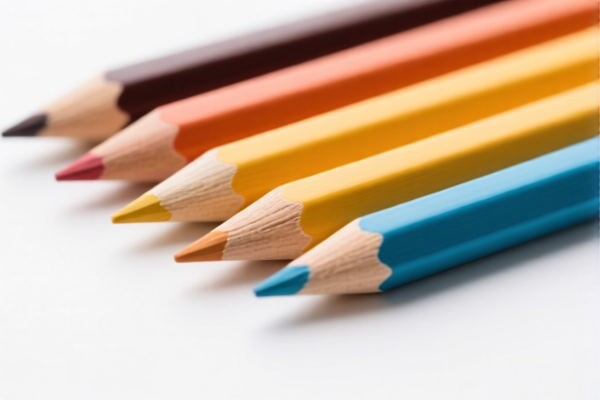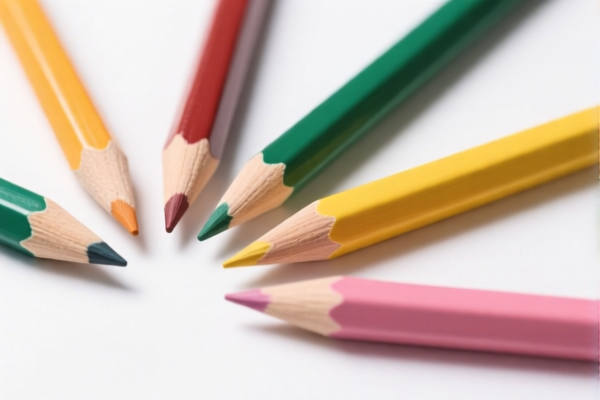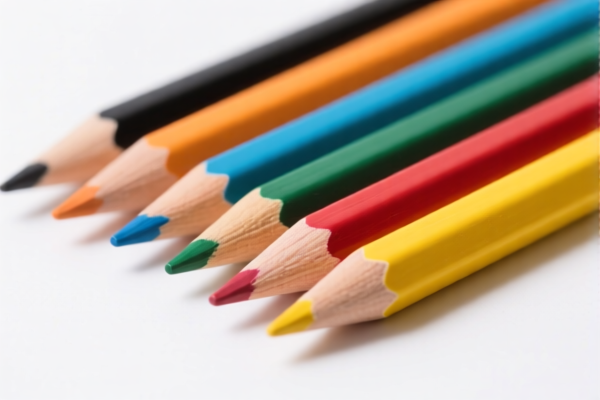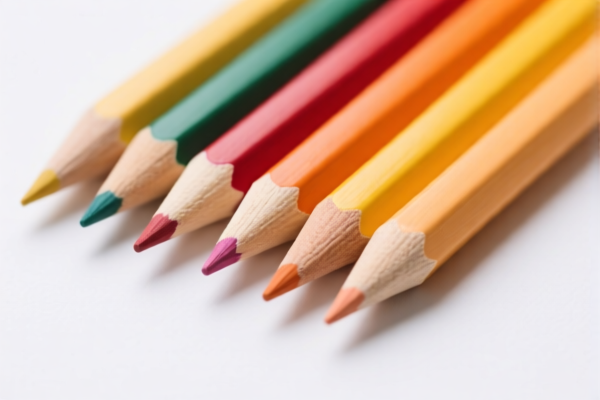| HS Code | Official Doc | Tariff Rate | Origin | Destination | Effective Date |
|---|---|---|---|---|---|
| 9609100000 | Doc | 14¢/gross + 4.3%+37.5% | CN | US | 2025-05-12 |
| 9609908000 | Doc | 37.5% | CN | US | 2025-05-12 |
| 3213100000 | Doc | 6.5% on the entire set+55.0% | CN | US | 2025-05-12 |
| 3926100000 | Doc | 35.3% | CN | US | 2025-05-12 |
| 9608996000 | Doc | 37.5% | CN | US | 2025-05-12 |
| 4802562000 | Doc | 55.0% | CN | US | 2025-05-12 |
| 9608100000 | Doc | 0.8¢ each + 5.4%+37.5% | CN | US | 2025-05-12 |




Here is a structured and professional breakdown of the HS codes and associated tariffs for pencils and related products, based on the provided data:
✅ HS CODE: 9609100000
Product Description: Student pencils, sketch pencils, art pencils, drawing pencils, etc.
Tariff Summary:
- Base Tariff: 14¢/gross + 4.3%
- Additional Tariff: 7.5%
- Special Tariff after April 11, 2025: 30.0%
Total Tax: 14¢/gross + 4.3% + 7.5% + 30.0%
Key Notes:
- This code applies to general pencils used for educational or artistic purposes.
- Proactive Advice: Confirm the exact type of pencil (e.g., wooden, mechanical) and check if it falls under this category.
✅ HS CODE: 9609908000
Product Description: Student pencils, sketch pencils, etc.
Tariff Summary:
- Base Tariff: 0.0%
- Additional Tariff: 7.5%
- Special Tariff after April 11, 2025: 30.0%
Total Tax: 7.5% + 30.0%
Key Notes:
- This code may apply to pencils not covered under 9609100000.
- Proactive Advice: Verify if the pencils are of a different type or specification.
✅ HS CODE: 3213100000
Product Description: Colored pencils
Tariff Summary:
- Base Tariff: 6.5% on the entire set
- Additional Tariff: 25.0%
- Special Tariff after April 11, 2025: 30.0%
Total Tax: 6.5% + 25.0% + 30.0%
Key Notes:
- This code is specific to colored pencils, which may be subject to higher tariffs.
- Proactive Advice: Confirm the product is a complete set and not individual pencils.
✅ HS CODE: 3926100000
Product Description: Pencil clips
Tariff Summary:
- Base Tariff: 5.3%
- Additional Tariff: 0.0%
- Special Tariff after April 11, 2025: 30.0%
Total Tax: 5.3% + 30.0%
Key Notes:
- This code applies to pencil clips made of plastic or similar materials.
- Proactive Advice: Ensure the product is not classified under a different HS code (e.g., 9608).
✅ HS CODE: 9608996000
Product Description: Pencil clips
Tariff Summary:
- Base Tariff: 0.0%
- Additional Tariff: 7.5%
- Special Tariff after April 11, 2025: 30.0%
Total Tax: 7.5% + 30.0%
Key Notes:
- This code may apply to pencil clips made of different materials or designs.
- Proactive Advice: Confirm the material and design to ensure correct classification.
✅ HS CODE: 4802562000
Product Description: Pencil drawing paper
Tariff Summary:
- Base Tariff: 0.0%
- Additional Tariff: 25.0%
- Special Tariff after April 11, 2025: 30.0%
Total Tax: 25.0% + 30.0%
Key Notes:
- This code applies to paper specifically used for drawing with pencils.
- Proactive Advice: Confirm the paper is not classified under a different category (e.g., general paper).
✅ HS CODE: 9608100000
Product Description: Automatic pencils
Tariff Summary:
- Base Tariff: 0.8¢ each + 5.4%
- Additional Tariff: 7.5%
- Special Tariff after April 11, 2025: 30.0%
Total Tax: 0.8¢ each + 5.4% + 7.5% + 30.0%
Key Notes:
- This code applies to mechanical pencils.
- Proactive Advice: Confirm the product is not a standard pencil (which may fall under 9609).
📌 Important Reminders:
- April 11, 2025 Special Tariff: A 30.0% additional tariff will apply to all products listed above after this date.
- Anti-dumping duties: Not explicitly mentioned in the data, but always verify if applicable for iron or aluminum components.
- Certifications: Ensure compliance with any required documentation (e.g., origin certificates, product standards).
- Material and Unit Price: Verify the exact product description and pricing to avoid misclassification and unexpected tariffs.
Let me know if you need help with classification or documentation for a specific product. Here is a structured and professional breakdown of the HS codes and associated tariffs for pencils and related products, based on the provided data:
✅ HS CODE: 9609100000
Product Description: Student pencils, sketch pencils, art pencils, drawing pencils, etc.
Tariff Summary:
- Base Tariff: 14¢/gross + 4.3%
- Additional Tariff: 7.5%
- Special Tariff after April 11, 2025: 30.0%
Total Tax: 14¢/gross + 4.3% + 7.5% + 30.0%
Key Notes:
- This code applies to general pencils used for educational or artistic purposes.
- Proactive Advice: Confirm the exact type of pencil (e.g., wooden, mechanical) and check if it falls under this category.
✅ HS CODE: 9609908000
Product Description: Student pencils, sketch pencils, etc.
Tariff Summary:
- Base Tariff: 0.0%
- Additional Tariff: 7.5%
- Special Tariff after April 11, 2025: 30.0%
Total Tax: 7.5% + 30.0%
Key Notes:
- This code may apply to pencils not covered under 9609100000.
- Proactive Advice: Verify if the pencils are of a different type or specification.
✅ HS CODE: 3213100000
Product Description: Colored pencils
Tariff Summary:
- Base Tariff: 6.5% on the entire set
- Additional Tariff: 25.0%
- Special Tariff after April 11, 2025: 30.0%
Total Tax: 6.5% + 25.0% + 30.0%
Key Notes:
- This code is specific to colored pencils, which may be subject to higher tariffs.
- Proactive Advice: Confirm the product is a complete set and not individual pencils.
✅ HS CODE: 3926100000
Product Description: Pencil clips
Tariff Summary:
- Base Tariff: 5.3%
- Additional Tariff: 0.0%
- Special Tariff after April 11, 2025: 30.0%
Total Tax: 5.3% + 30.0%
Key Notes:
- This code applies to pencil clips made of plastic or similar materials.
- Proactive Advice: Ensure the product is not classified under a different HS code (e.g., 9608).
✅ HS CODE: 9608996000
Product Description: Pencil clips
Tariff Summary:
- Base Tariff: 0.0%
- Additional Tariff: 7.5%
- Special Tariff after April 11, 2025: 30.0%
Total Tax: 7.5% + 30.0%
Key Notes:
- This code may apply to pencil clips made of different materials or designs.
- Proactive Advice: Confirm the material and design to ensure correct classification.
✅ HS CODE: 4802562000
Product Description: Pencil drawing paper
Tariff Summary:
- Base Tariff: 0.0%
- Additional Tariff: 25.0%
- Special Tariff after April 11, 2025: 30.0%
Total Tax: 25.0% + 30.0%
Key Notes:
- This code applies to paper specifically used for drawing with pencils.
- Proactive Advice: Confirm the paper is not classified under a different category (e.g., general paper).
✅ HS CODE: 9608100000
Product Description: Automatic pencils
Tariff Summary:
- Base Tariff: 0.8¢ each + 5.4%
- Additional Tariff: 7.5%
- Special Tariff after April 11, 2025: 30.0%
Total Tax: 0.8¢ each + 5.4% + 7.5% + 30.0%
Key Notes:
- This code applies to mechanical pencils.
- Proactive Advice: Confirm the product is not a standard pencil (which may fall under 9609).
📌 Important Reminders:
- April 11, 2025 Special Tariff: A 30.0% additional tariff will apply to all products listed above after this date.
- Anti-dumping duties: Not explicitly mentioned in the data, but always verify if applicable for iron or aluminum components.
- Certifications: Ensure compliance with any required documentation (e.g., origin certificates, product standards).
- Material and Unit Price: Verify the exact product description and pricing to avoid misclassification and unexpected tariffs.
Let me know if you need help with classification or documentation for a specific product.
Customer Reviews
No reviews yet.